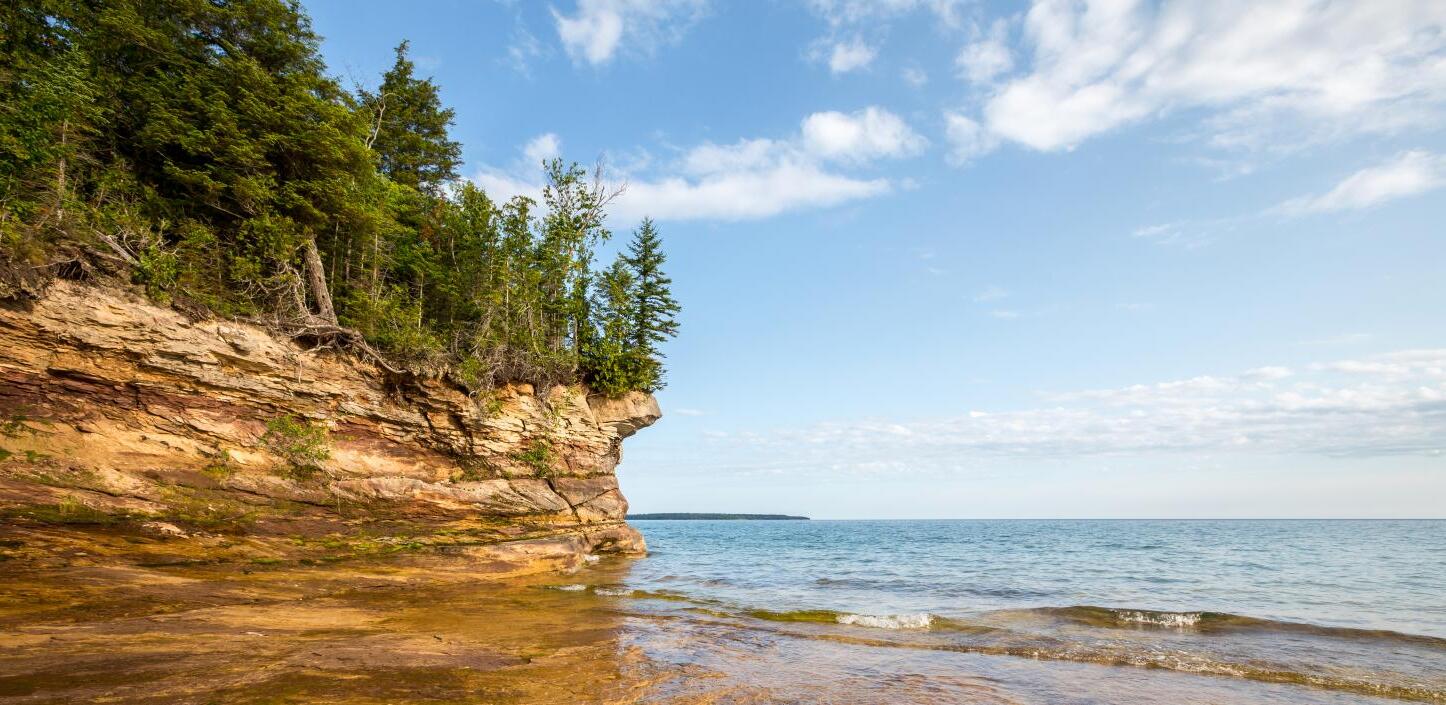
Did you know the Great Lakes hold about 84% of North America's fresh surface water? These five massive lakes—Superior, Michigan, Huron, Erie, and Ontario—are like inland seas, shaping the environment and economy of the surrounding regions. They cover over 94,000 square miles and contain around 5,439 cubic miles of water. The Great Lakes are home to thousands of plant and animal species, some found nowhere else on Earth. They also play a crucial role in shipping, recreation, and providing drinking water to millions. Whether you're a nature lover, history buff, or science enthusiast, the Great Lakes offer something fascinating for everyone.
Key Takeaways:
- The Great Lakes are a group of five massive freshwater lakes in North America, holding 84% of the continent's fresh surface water and supporting a diverse range of wildlife.
- With a $6 trillion economy, the Great Lakes are not only natural wonders but also vital for transportation, fishing, and tourism, making them a significant part of North American history and culture.
The Great Lakes: An Overview
The Great Lakes are a group of five large freshwater lakes in North America. They are a crucial natural resource and hold many fascinating facts. Let's dive into some intriguing details about these majestic bodies of water.
-
The Great Lakes consist of Lake Superior, Lake Michigan, Lake Huron, Lake Erie, and Lake Ontario.
-
Combined, they form the largest group of freshwater lakes by total area in the world.
-
They contain about 84% of North America's fresh surface water.
Lake Superior: The Largest and Deepest
Lake Superior stands out due to its size and depth. Here are some remarkable facts about this giant lake.
-
Lake Superior is the largest of the Great Lakes by surface area.
-
It holds more water than the other four Great Lakes combined.
-
The lake's maximum depth reaches about 1,333 feet.
-
It has a surface area of 31,700 square miles.
Lake Michigan: The Only One Entirely in the U.S.
Lake Michigan is unique among the Great Lakes. Let's explore why.
-
Lake Michigan is the only Great Lake located entirely within the United States.
-
It is the second-largest of the Great Lakes by volume.
-
The lake's shoreline stretches for about 1,640 miles.
-
Chicago, the third-largest city in the U.S., sits on its southwestern shore.
Lake Huron: Home to the Largest Island
Lake Huron has some distinctive features that set it apart. Here are a few notable facts.
-
Lake Huron is the second-largest Great Lake by surface area.
-
It contains Manitoulin Island, the world's largest freshwater island.
-
The lake has a surface area of 23,000 square miles.
-
Georgian Bay, a large bay of Lake Huron, is often called the "sixth Great Lake."
Lake Erie: The Shallowest and Warmest
Lake Erie is known for its shallowness and warmth. Let's look at some interesting facts.
-
Lake Erie is the shallowest of the Great Lakes, with an average depth of 62 feet.
-
It is the warmest of the Great Lakes due to its shallowness.
-
The lake's surface area is about 9,910 square miles.
-
Lake Erie is the fourth-largest Great Lake by surface area.
Lake Ontario: The Smallest and Easternmost
Lake Ontario may be the smallest, but it has its own unique characteristics. Here are some key facts.
-
Lake Ontario is the smallest of the Great Lakes by surface area.
-
It has a surface area of 7,340 square miles.
-
The lake's maximum depth is about 802 feet.
-
Toronto, Canada's largest city, is located on its northwestern shore.
Environmental Significance
The Great Lakes play a crucial role in the environment. Here are some important environmental facts.
-
They provide drinking water to over 40 million people.
-
The lakes support a diverse range of wildlife, including over 3,500 species of plants and animals.
-
They are a vital habitat for many migratory bird species.
Economic Impact
The Great Lakes are not just natural wonders; they also have a significant economic impact. Let's delve into some economic facts.
-
The Great Lakes region supports a $6 trillion economy.
-
They are a major transportation route for goods, with over 200 million tons of cargo shipped annually.
-
The lakes support a robust fishing industry, contributing billions to the economy.
Historical and Cultural Importance
The Great Lakes have a rich history and cultural significance. Here are some historical and cultural facts.
-
Indigenous peoples have lived around the Great Lakes for thousands of years.
-
The lakes played a crucial role in the fur trade during the 17th and 18th centuries.
-
Many shipwrecks lie at the bottom of the Great Lakes, with Lake Superior alone having over 350 known wrecks.
Recreational Activities
The Great Lakes offer numerous recreational opportunities. Here are some fun facts about recreation.
-
The lakes are popular for boating, with thousands of boats registered in the region.
-
They offer excellent fishing opportunities, with species like salmon, trout, and walleye.
-
The Great Lakes are a popular destination for tourists, attracting millions of visitors each year.
The Final Splash
Great Lakes facts are more than trivia; they reveal the importance of these natural wonders. Covering over 94,000 square miles, they hold about 20% of the world's fresh surface water. Each lake has unique features, from Lake Superior's depth to Lake Erie’s biodiversity. They support diverse ecosystems, provide drinking water to millions, and offer recreational activities.
Pollution and invasive species threaten these lakes. Efforts to protect and preserve them are crucial. Understanding their significance helps us appreciate and safeguard them for future generations.
Next time you visit or read about the Great Lakes, remember these facts. They’re not just bodies of water; they’re vital to our environment and well-being. Dive into their history, explore their beauty, and join efforts to keep them pristine. The Great Lakes are treasures worth protecting.
Frequently Asked Questions
Was this page helpful?
Our commitment to delivering trustworthy and engaging content is at the heart of what we do. Each fact on our site is contributed by real users like you, bringing a wealth of diverse insights and information. To ensure the highest standards of accuracy and reliability, our dedicated editors meticulously review each submission. This process guarantees that the facts we share are not only fascinating but also credible. Trust in our commitment to quality and authenticity as you explore and learn with us.


